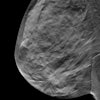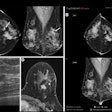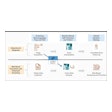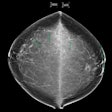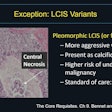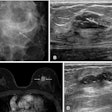
You've heard of the controversial Canadian study that cast doubt on the effectiveness of mammography. Now, a new study from Canada has found that breast cancer screening reduces mortality rates by 40% across all ages, according to results published in the Journal of the National Cancer Institute.
The findings counter results from the Canadian National Breast Screening Study (CNBSS), a randomized controlled trial (RCT) conducted by Dr. Anthony Miller of the University of Toronto and analyzed in BMJ earlier this year. Miller's group declared that annual screening mammography for women between the ages of 40 and 59 did not reduce breast cancer death beyond the effects of physical exams or usual care from their doctors.
But Miller's results are not borne out by the majority of the literature, according to lead author Andrew Coldman, PhD, from the British Columbia Cancer Agency.
"Most observational data on screening mammography -- including our results here -- have found a reduction in mortality rates," Coldman told AuntMinnie.com. "Unfortunately, the few studies that don't find mammography helpful get more publicity than the ones that do."
 Andrew Coldman, PhD, from the British Columbia Cancer Agency.
Andrew Coldman, PhD, from the British Columbia Cancer Agency.A matter of subtraction
Coldman and colleagues compared breast cancer death rates in women who participated in organized breast screening programs with an estimate of what would have happened if they had not participated, based on the experience of women in the same area who didn't get breast screening. For the study, the group invited 12 provincial breast cancer screening programs to participate; seven programs were able and willing to provide the data needed (JNCI, November 2014, Vol. 106:11, pp. 1-7).
The researchers put together separate cohorts for each screening program that consisted of women who had at least one mammography screening exam between ages 40 and 79 at some point between January 1990 and December 2009. Data from 2.8 million screening participants were included, and the information was broken out by five-year age groups and calendar periods.
Each province that participated linked its screening program database to its provincial cancer registry and mortality database, according to the researchers. The linked data were then used to identify cases and deaths from breast cancer that occurred within each cohort during the study time frame to distinguish between screened women and nonscreened women.
"We compared data from each province's screening programs to data from its cancer registry," he said. "It was essentially a matter of subtraction to estimate the relevant rates in the nonscreened."
Lower mortality rates
The group found that participation in a provincial breast cancer screening program was associated with an average 40% lower breast cancer death rate than expected in all provinces that participated in the study. This figure did not vary much by age.
"Age at entry into screening did not greatly affect the magnitude of the average reduction in mortality, which varied between 35% and 44%," Coldman and colleagues wrote.
The number needed to participate in screening to prevent a single death from breast cancer within 10 years decreased with age, however, with 1,247 needed for women first screened at age 40 to 49, 757 for women ages 50 to 59, 552 for women ages 60 to 69, and 498 for those between the ages of 70 and 79.
"These results are not influenced by trends in the efficacy of treatment or population awareness of breast cancer symptoms, as comparisons [were] made between contemporaneous cases in the same populations," the team wrote.
Counteracting bias
Comparing screening participants to nonparticipants opens the door for self-selection bias, according to Coldman and colleagues. To counter this, the researchers performed a substudy using data from women in British Columbia (BC) between 35 and 44 years of age; women 40 to 44 were eligible for screening in British Columbia, while women 35 to 39 were not.
They calculated the ratio of breast cancer incidence rates for the younger age group from 2000 to 2009 compared with 1975 to 1984, which offered an estimate of trends in breast cancer incidence unrelated to screening; they then applied this ratio to the incidence rate for women ages 40 to 44 in Canada's prescreening period (1975 to 1984) to estimate incidence rates for women in this age group between 2000 and 2009 if they had not been screened.
The result? The substudy did not find evidence of overestimation of mortality reduction associated with screening because of self-selection -- although the team conceded that the substudy data were narrow.
"The substudy did not indicate that screening effects were overestimated because of self-selection bias, but the methodology used did not permit examination of all age groups and was only performed using data from one region," the group wrote. "[However,] the BC substudy is likely generalizable to other provinces and other ages, as each provincial program provided similar access to screening, and age at entry was primarily determined by age when screening became available."
Dueling results?
Coldman's research and the CNBSS study used similar data, but the methods were very different, according to a comment from Dr. Russell Harris, from the University of North Carolina at Chapel Hill, that accompanied Coldman's work.
"The CNBSS was an RCT, assuring similarity of compared groups by randomization," Harris wrote. "The provincial study, on the other hand, is an observational study that pulls together data from each of the seven screening programs, provincial cancer registries, and provincial mortality databases in an attempt to compare observed breast cancer mortality among 'participants' with expected mortality if they had not been screened."
The indirect approach of observational studies is prone to error at every step of the way, according to Harris.
"Calculating expected mortality for participants using data from nonparticipants is hazardous; our confidence in these estimates must be low," he wrote. "Thus in the duel between RCT and observational studies, there is no contest: RCTs simply provide better evidence about mortality in screening programs."
However, observational studies do have a role in assessing whether screening programs reduce mortality, Harris wrote.
"RCTs cannot easily be used to monitor the effects of screening over time. But that is exactly what is needed," he wrote. "We need ongoing studies to monitor and compare the effects of different screening programs -- including both benefits and harms. Although not ideal ... observational studies are more suited for this task than RCTs."

